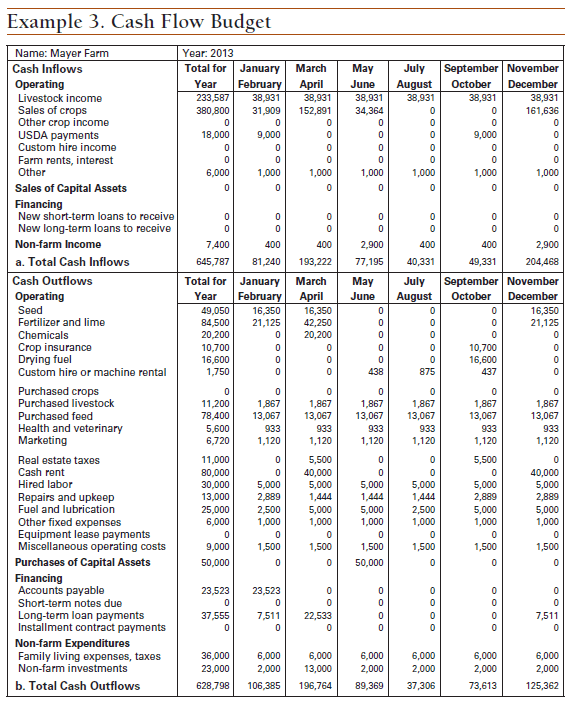Contents:


This movement of electrons is accompanied by the emission of light. The process of deliberate addition of a desirable Impurity to a pure semiconductor so as to increase its conductivity is called doping. The mobility of holes is ______ mobility of electrons in intrinsic semiconductors. To increase the conductivity of the semiconductors, some suitable impurity is added to them. The conductivity of an intrinsic semiconductor is very low at room temperature.So we add a small amount of impurity to the pure semiconductor.
Optimization of bandgap reduction in 2-dimensional GO nanosheets … – Nature.com
Optimization of bandgap reduction in 2-dimensional GO nanosheets ….
Posted: Fri, 28 Apr 2023 10:27:26 GMT [source]
This thesis reports a passive method for Fermi level regulation in quantum dot assemblies through ground state transfer between QDs. Here, ZnTe/CdS, and PbSe/CdSe core/shell QDs were used as valence band electron donors, … Has been provided alongside types of Whats meant by doping? Theory, EduRev gives you an ample number of questions to practice Whats meant by doping? The extra electrons that get passed throughout the boundary between layers, known as a junction, the brighter the light. This phenomenon, often known as electroluminescence, was observed as early as 1907.
Its resistance falls as its temperature rises; metals are the other. Its conducting properties could also be altered in helpful ways by introducing impurities (“doping”) into the crystal construction. The junction doesn’t permit the circulate of electrons in the wrong way when the potential is applied in reverse, creating, in a sense, an electrical examine valve. A diode vacuum tube or thermionic diode is a vacuum tube with two electrodes, a heated cathode and a plate, in which electrons can move in only one course, from cathode to plate. A semiconductor diode, the most commonly used kind at present, is a crystalline piece of semiconductor material with a p–n junction connected to 2 electrical terminals. Semiconductor diodes have been the primary semiconductor electronic units.
Learn and Prepare for any exam you want !
The dopant atom can form covalent bonds with three neighbouring Si/Ge atoms, but it does not have an extra electron to make a bond with the fourth Si atom. So there is a vacancy between the fourth neighbour Si/Ge and the trivalent dopant atom. This vacancy is known as a hole, which can accept an electron, and this trivalent atom is called an acceptor atom. A pure semiconductor doped with a trivalent impurity like Al, Ga, In etc. gives an p-type semiconductor.
- Some examples of semiconductors are silicon, germanium, gallium arsenide, and parts near the so-called “metalloid staircase” on the periodic table.
- This thesis reports a passive method for Fermi level regulation in quantum dot assemblies through ground state transfer between QDs.
- Once an acceptor atom changes a tetravalent Si atom within the crystal, then an electron-hole can be created.
- When we dope intrinsic material with Pentavalent impurities we get N-Type semiconductor, where N stands for Negative.
Such gadgets have established extensive purposes because of their reliability, compactness, and low price. These are discrete components which are used in power devices, compactness optical sensors, and light-weight emitters, including stable-state lasers. They have a wide range of present and voltage handling capabilities, with current scores more than 5,000 amperes and voltage ratings greater than a hundred,000 volts. For brief-range particles, they need any contact or un-depleted semiconductor on no less than one floor to be very thin. They have a finite life, particularly when detecting heavy particles, because of radiation harm. Silicon and germanium are fairly completely different of their capacity to convert gamma rays to electron showers.
Can you explain what is meant by Gram ve and Gram -ve bacteria?
The diode’s terminals are connected to the n-sort and p-type regions. The boundary between these two regions, referred to as a p–n junction, is the place the action of the diode takes place. When a sufficiently larger electrical potential is applied to the P side than to the N aspect , it allows electrons to circulate via the depletion area from the N-type aspect to the P-sort aspect. A semiconductor material has an electrical conductivity value falling between that of a conductor, similar to metallic copper, and an insulator, similar to glass. How a lot electrical energy a semiconductor can conduct depends on the fabric and its mixture content material. Semiconductors can be insulators at low temperatures and conductors at excessive temperatures.
The manufacture of importance of doping in semiconductorss controls exactly the placement and concentration of p- and n-kind dopants. The connection of n-type and p-kind semiconductors form p–n junctions. Today, most diodes are made from silicon, however different materials such as gallium arsenide and germanium are additionally used. This is called floor passivation, a method that became crucial to the semiconductor business because it made potential the mass-manufacturing of silicon built-in circuits . Building on his surface passivation technique, he developed the metal oxide semiconductor process, which he proposed could be used to build the first working silicon field-effect transistor . Many integrated circuits also incorporate diodes on the connection pins to stop exterior voltages from damaging their delicate transistors.
Semiconductor Devices and Circuits, Applications
Materials that have the resistance levels between those of a conductor and an insulator are referred to as semiconductors. They are quite common, found in almost all electronic devices. Good examples of semiconductor materials are germanium, selenium, and silicon. The habits of charge carriers, which embody electrons, ions and electron holes, at these junctions is the basis of diodes, transistors and all modern electronics. • These supplies are the muse of recent day electronics similar to radio, computers and cell phones. Semiconductor material is used in the manufacturing of electrical components and used in electronic units similar to transistors and diodes.
The process of adding impurity atoms to the pure semiconductor is called doping. It is the intentional introduction of impurities into a pure semiconductor for the purpose of modulating its electrical, optical and structural properties. A doped semiconductor or extrinsic semiconductor is one that has had specific impurity atoms introduced into it to shrink the band gap. The charge carriers in this semiconductor are positively charged and moves from one atom to another within semiconducting materials. The trivalent elements which are added to an intrinsic semiconductor will create positive electron holes within the structure. The whole no. of holes can be equal to the no. of donor sites (p ≈ NA).
The other had impurities that wished to bind to those electrons, making it an “insulator”. However, when the voltage was reversed the electrons being pushed into the collector would rapidly refill the “holes” (the electron-needy impurities), and conduction would stop nearly immediately. The semiconductor which is in pure form is known as intrinsic and when the impurities are added to semiconductor intentionally to make conductive is known as extrinsic. Properties of nanocrystals are extremely sensitive to their sizes when their sizes are smaller or of the order of the excitonic diameter due to the quantum confinement effect.
Similar NEET Doubts
This increases the conductivity of the semiconductor by manifold. The Number Of Electron-hole Pairs In An Intrinsic Semiconductor Is at 27oC. If This Semiconductor Is Doped By A Donor Impurity Such That The Number Of Conduction Electrons Becomes, Calculate The Number Of Holes At 27oC. Also Calculate The Dopant Concentration. A light emitting p-n junction can also be made to emit _________ and thus can serve as a laser.
- In this type of conductivity, the outer electrons can flow from one covalent to others.
- Doping concentration for silicon semiconductors may range anywhere from 1013 cm−3 to 1018 cm−3.
- The process of deliberate addition of a desirable Impurity to a pure semiconductor so as to increase its conductivity is called doping.
- The PN-junction diode is made up of two adjacent parts of two semiconductor materials like p-type and n-type.
The P stands for Positive, which means the semiconductor is rich in holes or Positive charged ions. When we dope intrinsic material with Pentavalent impurities we get N-Type semiconductor, where N stands for Negative. N-type semiconductors have Negative charged ions or in other words have excess electrons in it. These semiconductors are made through doping the semiconductor material. The small amount of impurity is added compared with the amount of semiconductor.
The Question and answers have been prepared according to the NEET exam syllabus. Find important definitions, questions, meanings, examples, exercises and tests below for Whats meant by doping? This impact is typically exploited by particle detectors to detect radiation. A single particle of radiation, with thousands or millions of electron volts of power, generates many cost carrier pairs, as its power is deposited in the semiconductor material. These semiconductor radiation detectors want efficient and uniform cost assortment and low leakage present.
Any of assorted stable substances, corresponding to silicon or germanium, that conduct electricity more simply than insulators but less easily than conductors. Where n0 is the concentration of conducting electrons, p0 is the electron hole concentration, and ni is the material’s intrinsic carrier concentration. The intrinsic carrier concentration varies between materials and is dependent on temperature. Silicon’s ni, for example, is roughly 1.08×1010 cm−3 at 300 kelvins, about room temperature. The process of adding impurities in one type of semiconductor which is named as extrinsic semiconductor to make it usable is called Doping.
The potential difference is given to the semiconductor is shown below. Once an acceptor atom changes a tetravalent Si atom within the crystal, then an electron-hole can be created. It is one kind of charge carrier that is accountable for generating electric current within semiconducting materials.
By altering the dopant amount which is added, the precise character of the semiconductor will be changed. In this type of semiconductor, the number of holes is larger compare with electrons. Trivalent impurities like boron/gallium are frequently used in Si like doping impurity. So the p-type semiconductor examples are gallium otherwise boron. Silicon is a important element for fabricating most digital circuits. Atalla first revealed his findings in Bell memos during 1957, and then demonstrated it in 1958.
Semiconductors: What Is the Supply Chain? Why Is it Important? – Investopedia
Semiconductors: What Is the Supply Chain? Why Is it Important?.
Posted: Wed, 29 Mar 2023 07:00:00 GMT [source]
Atalla’s floor passivation course of enabled silicon to surpass the conductivity and performance of germanium, and led to silicon changing germanium because the dominant semiconductor material. To create a P-type semiconductor, all we must do is to pop in a trivalent element into the lattice. A trivalent element has three electrons in its valence shell. It shares three electrons with three neighboring silicon atoms in the lattice, the fourth silicon atom demands an electron but the trivalent atom has no more electron to share.
The p-Type Semiconductor energy band diagram is shown below. The no. of holes within the covalent bond can be formed in the crystal by adding the trivalent impurity. A less amount of electrons will also be accessible within the conduction band. This area is called the depletion area as a result of there are not any charge carriers in it. A single semiconductor crystal can have many p- and n-sort areas; the p–n junctions between these areas are answerable for the useful digital conduct. The crystal had cracked because both facet contained very slightly totally different amounts of the impurities Ohl couldn’t remove – about zero.2%.

For longer-range particles, they want a really large depletion depth and enormous space. More importantly, semiconductor gadgets lend themselves to integration into complicated but readily construct-up microelectronic circuits. They are having probable future, the important thing parts of nearly all of electronic systems together with communications with knowledge-processing, shopper, and industrial-management tools.
The doping is done in semiconductor to increase the number of mobile electrons//holes and hence to increase the conductivity of semiconductor. Doping is the process of adding impurities to intrinsic semiconductors to alter their properties. Semiconductors are used extensively in electronic circuits. As its name implies, a semiconductor is a material that conducts current, but only partly. The conductivity of a semiconductor is somewhere between that of an insulator, which has almost no conductivity, and a conductor, which has almost full conductivity.

In general, increased doping leads to increased conductivity due to the higher concentration of carriers. Degenerate semiconductors have conductivity levels comparable to metals and are often used in integrated circuits as a replacement for metal. Often superscript plus and minus symbols are used to denote relative doping concentration in semiconductors. For example, n+ denotes an n-type semiconductor with a high, often degenerate, doping concentration. Similarly, p− would indicate a very lightly doped p-type material.
Doping of silicon with any impurity must not change the crystal structure or the bonding process. Silicon can be doped with two most important materials; they are boron and phosphorus. Other materials are aluminium, indium and arsenic, antimony. The extra electron of impurity atom does not participate in a covalent bonding. These electrons are loosely packed together by their originator atoms. The dopant atom has 3 valence electrons, one valence electron less than Si or Ge.
This proportion may be reduced to parts per billion in very lightly doped silicon. Typical concentration values fall somewhere in this range and are tailored to produce the desired properties in the device that the semiconductor is intended for. When two in a different way-doped regions exist in the identical crystal, a semiconductor junction is created. The habits of charge carriers, which embrace electrons, ions and electron holes, at these junctions is the basis of diodes, transistors and all fashionable electronics. Some examples of semiconductors are silicon, germanium, gallium arsenide, and parts near the so-called “metalloid staircase” on the periodic table. After silicon, gallium arsenide is the second most typical semiconductor and is utilized in laser diodes, solar cells, microwave-frequency integrated circuits and others.
